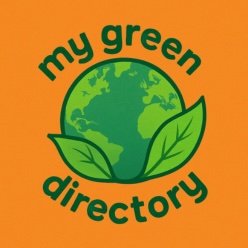Nature-based solutions (NBS) harness the power of ecosystems to capture and store carbon dioxide, helping to mitigate climate change while supporting biodiversity and community well-being. This guide explains what nature-based solutions are, why they matter, and how your business or organization can implement them for effective carbon sequestration.
🌱 What Are Nature-Based Solutions?
Nature-based solutions are actions that protect, restore, and sustainably manage natural or modified ecosystems to address societal challenges—such as climate change—while providing benefits for people and nature. Key examples include:
- Reforestation and Afforestation: Planting trees in deforested or degraded areas to restore forests and enhance carbon uptake.
- Restorative Agriculture: Practices like cover cropping, reduced tillage, and agroforestry that improve soil health and increase carbon storage in soils.
- Wetland and Mangrove Restoration: Rehabilitating coastal wetlands and mangrove forests, which are highly effective at sequestering carbon and protecting shorelines.
- Peatland Conservation: Protecting and restoring peatlands, which store vast amounts of carbon in their waterlogged soils.
- Seagrass and Coral Reef Protection: Maintaining marine ecosystems that capture and store carbon in sediments and biomass.
✅ Why Use Nature-Based Solutions for Carbon Sequestration?
- Effective Carbon Removal: NBS can remove significant amounts of CO₂ from the atmosphere, with global potential to sequester hundreds of gigatons if implemented at scale.
- Multiple Co-Benefits: Beyond carbon, these solutions improve air and water quality, support biodiversity, and enhance resilience to climate impacts.
- Scalability and Readiness: Many nature-based solutions are ready for immediate deployment and can be adapted to a wide range of environments.
- Community and Economic Benefits: NBS create jobs, support local economies, and strengthen community ties to the land.
🚀 How to Implement Nature-Based Solutions: A Step-by-Step Guide
1️⃣ Assess Your Land or Ecosystem
- Identify degraded or underutilized areas suitable for restoration or improved management.
- Consider local climate, soil type, and biodiversity needs to select the most appropriate NBS.
2️⃣ Choose the Right Nature-Based Solution
| Solution Type | Key Benefits | Example Practices |
|---|---|---|
| Reforestation/Afforestation | High carbon uptake, biodiversity, water regulation | Planting native tree species |
| Restorative Agriculture | Soil carbon, crop resilience, water quality | Cover crops, reduced tillage |
| Wetland/Mangrove Restoration | Carbon storage, flood protection, habitat | Planting mangroves, rewetting |
| Peatland Conservation | Massive carbon storage, water regulation | Blocking drainage, rewetting |
| Seagrass/Coral Protection | Marine carbon, biodiversity, fisheries support | Reducing runoff, restoration |
3️⃣ Plan and Partner for Success
- Engage local communities and stakeholders to ensure buy-in and long-term stewardship.
- Collaborate with experts in forestry, agriculture, or ecology for best practices and monitoring.
- Affiliate Example: Explore carbon offset projects with TraceX (affiliate link) for verified NBS initiatives.
4️⃣ Monitor and Verify Carbon Sequestration
- Use monitoring tools and technologies to track carbon storage and ecosystem health.
- Report progress transparently to stakeholders and carbon market participants.
5️⃣ Scale and Share Your Impact
- Expand successful projects to new areas as resources allow.
- Share your experiences and results to inspire others and attract additional support.
🌍 Success Stories
- Ducks in Thai Rice Fields: Farmers use ducks for pest control, reducing pesticide use and improving soil health as part of regenerative agriculture.
- Global Reforestation Initiatives: Projects like the Bonn Challenge aim to restore 350 million hectares of degraded land by 2030, sequestering billions of tons of carbon.
🔗 Get Started with Nature-Based Solutions
Ready to harness the power of nature for carbon sequestration?
👉 Discover NBS carbon offset projects at TraceX (affiliate link)
👉 Learn more about regenerative agriculture and NBS (source link)
Sources:
American University: Nature-Based Solutions Fact Sheet
World Economic Forum: 3 Nature-Based Solutions for Carbon Sequestration
Net Zero Climate: Nature-Based Solutions
ClimateXChange: Understanding Carbon Sequestration from Nature-Based Solutions
TraceX: Nature-Based Solution Projects for Carbon Offsets
Disclaimer
Content on MyGreenDirectory.com is for informational purposes only and may include affiliate links, which earn us a commission at no extra cost to you —helping support our mission to promote green living.. We only recommend products and services that align with our sustainable values. While we aim to highlight sustainable businesses, products, and services, we encourage all users to independently verify claims, certifications, and practices before making any decisions or purchases. This site is not a substitute for professional advice—please consult experts for health, legal, financial, or environmental decisions. Use the information at your own risk. We aren’t liable for any damages from using this site.

Comments